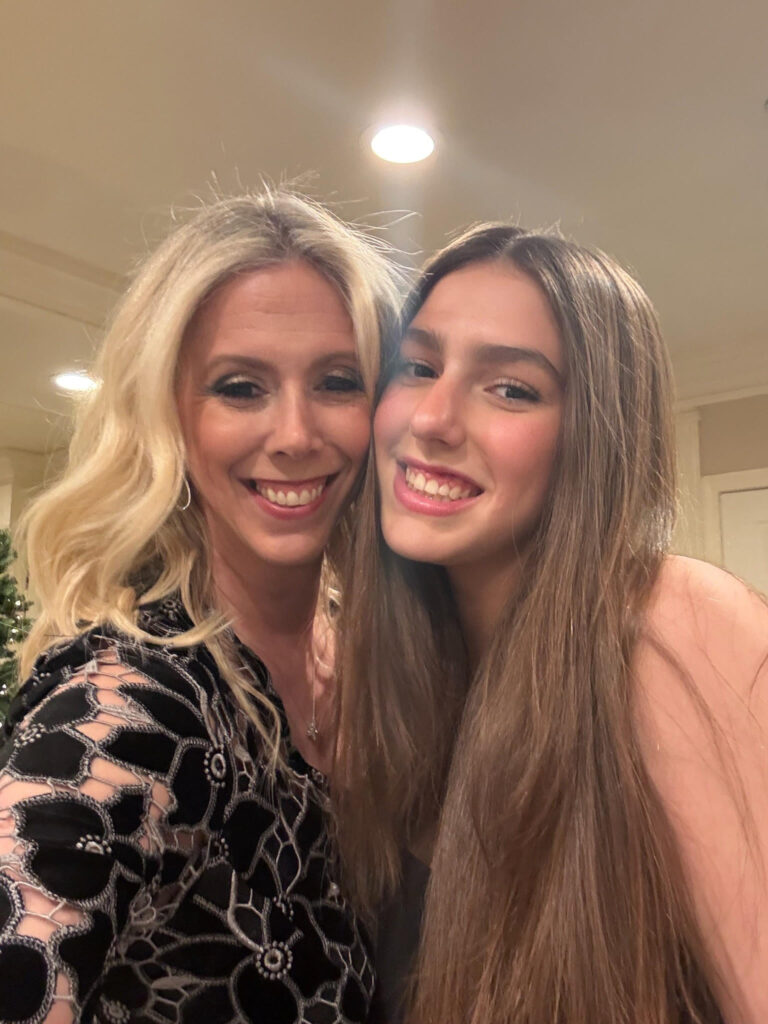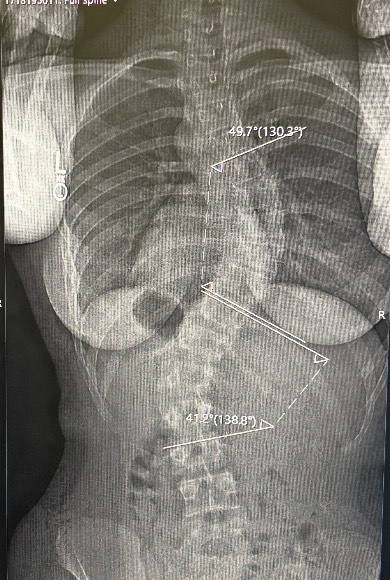Sitting in the doctor’s office, I braced myself for the news. When she said those words matter-of-factly, “We’re going to need to put you in a brace. You’ll need to wear it 18-20 hours a day. It might help, but it might not,” I couldn’t hold back my tears. I cried because I immediately understood what my daughter was feeling. I knew the flood of questions racing through her mind—I had been there myself. And in that moment, a wave of guilt and sadness washed over me. Despite knowing there’s nothing you can do to prevent it, I couldn’t help but feel responsible—my genes were the ones she inherited.
What’s remarkable is how much has changed since I was diagnosed. The brace I wore was clunky, uncomfortable, and painfully obvious under clothing. Today’s brace, though still made of hard material, fits more like a corset. Mine had metal bars down the front and back, a hard pad pulled tightly across my chest, and a metal hook that painfully pressed into my right breast.
Despite the tough news, there’s been surprising strength in both of us. My daughter has handled it better than I could have imagined, probably because she’s seen me go through something similar. She’s been more resilient than I was at her age, and I’m so proud of her for that. She’s determined to make the best of the situation, even though I know she has her moments of doubt and frustration.
I also know that the back pain I still struggle with worries her. I’ve had to manage it periodically throughout my life, and it’s something she fears for herself. It’s hard to watch her wrestle with that fear, knowing exactly what she’s thinking because I’ve been there too. I wish I could promise her everything will be fine, but I can’t. All I can do is be there for her and offer the lessons I’ve learned along the way.
What’s been different, though, is how much more active she is than I was at her age. She’s been encouraged to move and stay active—something that contrasts with my experience. When I was diagnosed, I was told to stay in the brace as much as possible, limiting physical activity and focusing on strengthening my core. In many ways, she has more freedom to live her life, and I’m grateful for that. She made significant progress, especially during the pandemic when she could wear the brace longer at home. That time allowed her to make real gains, but unfortunately, those gains started to slip when she pulled back from wearing it as much as she should have.
I can’t help but feel responsible for that. I know she took a risk, but at the same time, I understood how hard it was to stay committed to something so uncomfortable, having been through the same struggle. Maybe I should have pushed her more, but I also didn’t want to push her too hard, knowing how hard it was for me. Now, surgery is an option. Thankfully, it’s not mandatory, but her scoliosis is more severe than mine, and I can’t help but worry. I want to help her make the best decision, one that’s right for her.
It’s hard not to let my own experience influence her decision, but at the end of the day, her journey is different. I want her to choose what feels right for her—not be influenced by my story. This is her body, her story, and I just want to help her find the path that leads to the best outcome.
We’re doing the best we can, taking it one day at a time. Some days feel heavy, but we have each other—and that’s what matters most.


Read more patient stories like this from around the world.





